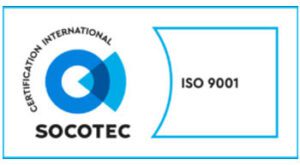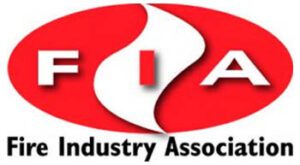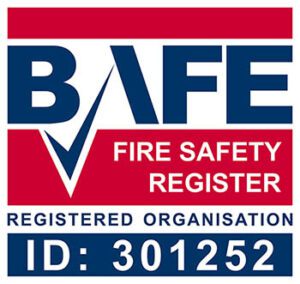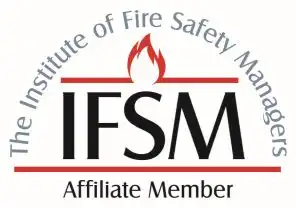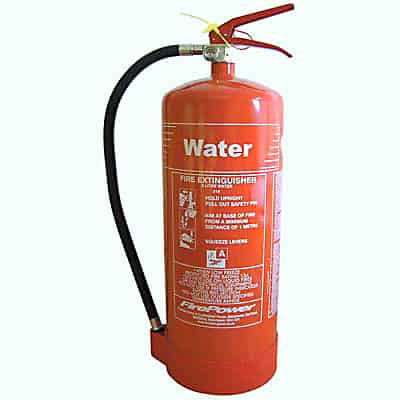A water fire extinguisher is used for Class A fires. Water fire extinguishers are one of the most common fire extinguishers in use in the UK today.
The water fire extinguisher is a good choice for Class A fires because it sprays water at high pressure to smother the flames. In addition, water fire extinguishers don’t contain any harmful chemicals, so are safe to use around children, vulnerable adults, and food.
What is a water fire extinguisher used for?
Class A fires involve organic materials like paper, coal, cloth, fabrics, and wood.
Please note: Water fire extinguishers should not be used on electronic fires, kitchen fires, fires involving flammable liquids, or fires caused by flammable gases.
Read about more fire extinguisher types: foam fire extinguishers, dry powder fire extinguishers, CO2 fire extinguishers, wet chemical fire extinguishers.
We explain all in our simple guide.
Summary: standard water fire extinguishers only work on fires involving flammable solids, but can be a good choice for some premises, such as warehouses and storage facilities.
Also known as:
• ‘Class A’ fire extinguishers
Water fire extinguisher uses:
• Fires involving flammable solids, such as paper, wood, and textiles (‘class A’ fires)
Do not use water fire extinguishers for:
• Electrical fires – this would be highly dangerous and could result in electrocution
• Fires involving flammable liquids, such as petrol and paint (‘class B’ fires)
• Fires involving flammable gases, such as methane and butane (‘class C’ fires)
• Cooking fires involving oil and grease, such as chip pan fires (‘class F’ fires)
How to identify a water fire extinguisher:
• WHITE coloured label stating ‘Water’
• Should be identified by an extinguisher ID sign fixed nearby – ‘Water Extinguisher’
Sizes of water fire extinguisher available:
• 3 litre
• 6 litre
• 9 litre
How do water fire extinguishers work:
Water has an extreme cooling effect.
When it is directed at flames, it lowers the overall temperature, making it impossible for the fire to burn.
Pros and Cons of water extinguishers:
Pros: highly cooling and so puts fires out rapidly; no negative environmental impact.
Cons: only works on one class of fire; dangerous if the water comes into contact with electrical equipment.
Who needs water fire extinguishers?:
Whilst water fire extinguishers are the ‘original’ extinguisher, these days it is quite common to recommend foam extinguishers instead, as foam extinguishers tackle both class A and class B fires.
However, environments which store large quantities of combustible materials may benefit from having water extinguishers. Examples include:
• Warehouses
• Storage units
• Paper mills
• Textile factories
Water fire extinguishers are also well suited for domestic use, especially in living rooms and bedrooms. They are best paired with a CO2 extinguisher, so that electrical fire risk is also covered.
Read more about the different types of fire extinguisher.
Learn what the different extinguisher colours signify.
How to use a water fire extinguisher:
Probably the safest type of extinguisher to use, with water fire extinguishers you essentially just need to point and spray.
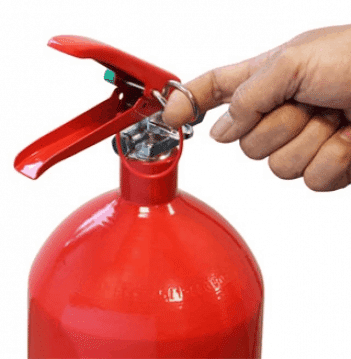
Using the extinguisher:
• First remove the safety pin to break the anti-tamper seal and stand well back from the fire
• Point the nozzle at the base of the flames and squeeze the handle
• Keep spraying until you are sure that all of the fire is out
If you think you need water fire extinguishers, or if you are not sure exactly what you need, please get in touch with our friendly team by calling 0800 157 1113, or emailing [email protected]. They can arrange a free survey visit for you from one of our BAFE registered extinguisher engineers.
All of our water extinguishers come with a 5 year guarantee, and we fit and commission them free of charge.
Contact Us
